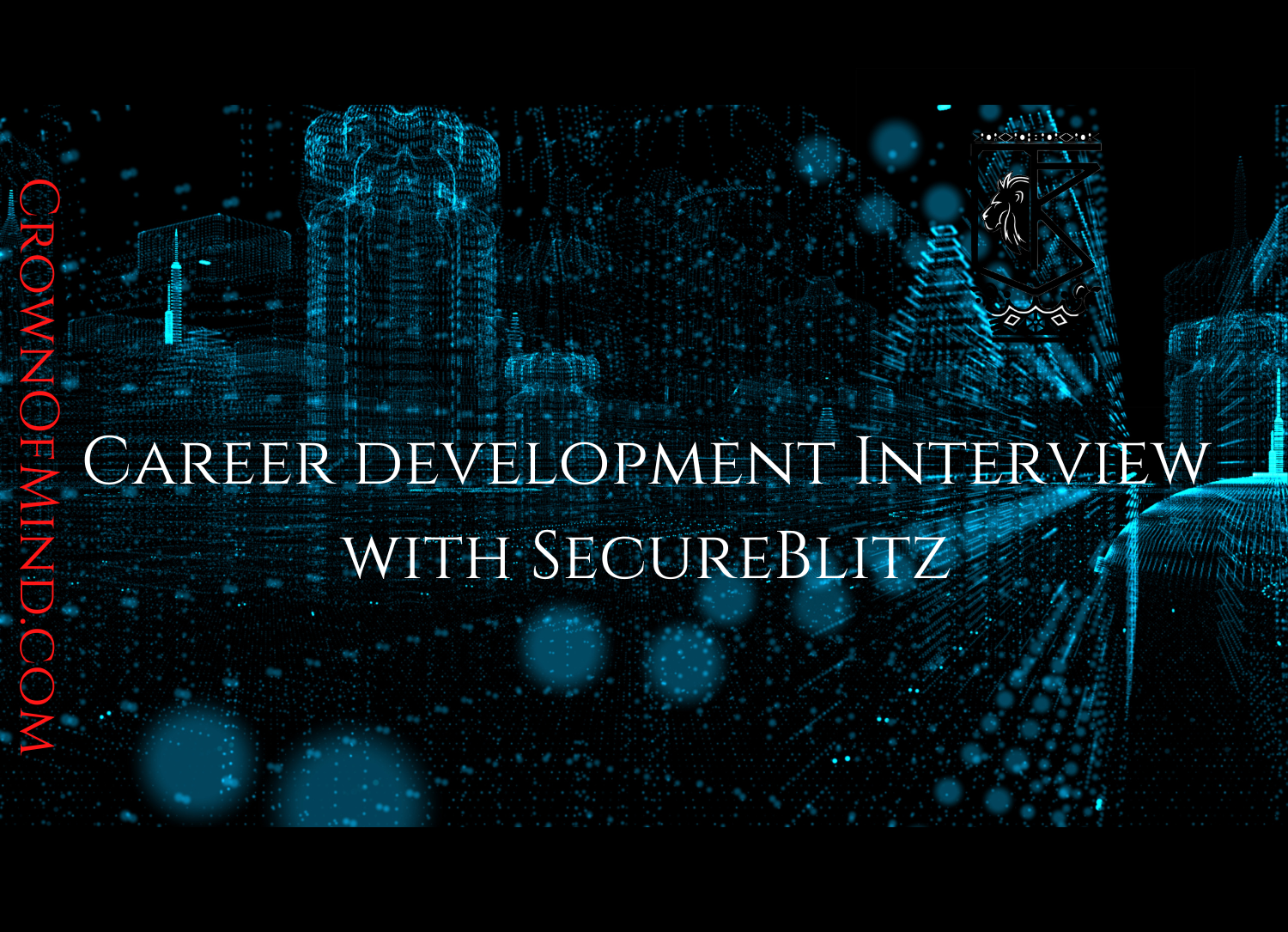Link: https://secureblitz.com/interview-with-trent-rhodes-from-fullstack-academy/
In this interview, we spoke with Trent Rhodes, a career coach manager with tech education provider Fullstack Academy.
Amid America’s “Great Resignation,” workers are quitting their jobs and considering career changes at an incredible rate. Nearly 9 out of 10 company execs say they’re seeing higher than usual turnover. And 50% of U.S. workers intend to make a career change, according to an Oct. 2021 report conducted by Harris Poll.
Fullstack Academy has seen this firsthand, as many of its students are career changers looking for a flexible way to learn new tech skills.
Here Are Trent Rhodes Responses To Our Questions:
- Can you please introduce yourself?
Trent Rhodes:
I’m Trent Rhodes, Manager for the Web Development Career Success Team at Fullstack Academy. I work with students and alums in a coaching capacity and support coaches across our Core and University Web Development programs.
Outside of Fullstack, I’m a martial artist, meditator, tea drinker, and writer. As an autodidact, my current technical learning includes a data analytics certificate through Coursera and Swift mobile app development on Udemy.
- Is Personal Branding an easy process when making a career change in the tech industry?
Trent Rhodes:
I’d say it’s simple but not easy. The simplistic involves understanding why personal branding is important: Industries are becoming more digitally savvy, engaging online. Platforms like LinkedIn boast millions of users, with a significant number of recruiters committing time to using it for sourcing candidates.
With our changing economy and patterns like The Great Resignation, automation and the youth growing up with digital identities reveal why professionals ought to invest time in developing an online presence. They can take advantage of where the activity is happening and how to communicate in it.
While simple to understand, I don’t envision it to be easy because personal branding asks a professional to self-examine, analyze and then articulate a self-concept to others.
With some time invested in an industry, this may be a smooth task. Giving a pitch when you’re in the business for several years might feel like a natural habit, but giving a pitch about your new profession to a new network contact when you just completed a training or educational program could pose a mindset challenge.
It’s less about the actual experiences or skills and more about the self-confidence the professional has to share those skills as well as what’s important to them. These could include compensation expectations, skill proficiency, knowing what one wants in a role or company culture, and being direct enough to invite these topics into a conversation with someone who could influence your next opportunity.
- As a career coach with Fullstack Academy – what do you think prospective career cybersecurity students should focus on?
Trent Rhodes:
Gaining Industry Knowledge: To truly understand the industry, I suggest “total immersion,” similar to how one might learn a new language. This means creating an environment where cybersecurity is available for absorption at multiple levels – reading about current events, listening to podcasts, watching YouTube videos, having conversations with people about current events and niche topics.
I don’t mean a prospective student should do all of these at once, but the desire to “think as a cybersecurity professional” can be cultivated by developing the mindset. This will come from the bootcamp curriculum and the self-learning that takes place outside of it.
Relationship Building: Joining the bootcamp will introduce students to a new network of like-minded individuals with aspirations to become successful in this field. They will also connect with instructors and have opportunities to meet with experienced alums.
For a student who has no initial cybersecurity network, this will be the first, high-quality opportunity to establish relationships that can last a career or lifetime. I recommend focusing on asking many questions, being curious about others, being willing to learn from others’ unique experiences, and taking no resource for granted.
The ability to develop relationships in bootcamp can be valuable practice for future interviews and networking meetings.
Have a Resilient, Open Mind: This sounds cliche but it’s one of the most important skills for a career changer. Joining the cybersecurity bootcamp will challenge you to change the way you think and consequently how you view the world.
It’s going to consistently invite you to consider alternate perspectives, think steps ahead. To do this well, you will see the benefit in dropping preconceived ideas. The open-mindedness in the experience will ask that you experiment and remain objective so you can see optimal paths and decisions.
Sometimes you’ll make mistakes and that’s where resilience comes in, to be capable of bouncing back to form after an unexpected outcome.
- Can you explain how to craft a pitch – and how to tweak it for different situations (career fairs, networking events, in-person interviews, etc.)?
Trent Rhodes:
Firstly, it will help to see the pitch as something beyond a mechanical tell-me-about-yourself. On a fundamental level, you are meeting someone who doesn’t know you and would like to. You would like to meet that person and have an unknown amount of time to introduce yourself.
Based on the context of different environments, you learn to communicate who you are and what you’re about in different ways. This is an interpersonal interaction where people connect with others.
The pitch has three areas, each of which are important for someone to know in professional settings: your past, your present, and future.
To describe it in prompts: Who were you professionally in the past? What led you to focus on what you’re doing now? What do you intend to accomplish in the future?
How you make this powerful is by considering what would be important to share. From your past, this would include a brief description of your past industry or career and reveal the skills gained from it. Instead of saying, “I worked in hospitality for four years” and then move on, try, “I worked in hospitality for four years where I developed time efficiency skills by working closely with the restaurant manager and a versatile communication style serving clients in many event settings.
I learned how to prevent people from crying in a crisis.” You know these details but your receiver doesn’t. Make them explicit – connect the dots for them.
Your present is the current work you’re focused on. In this case, it would be cybersecurity. Since you made the switch from one industry to this one, it will be important to articulate the why behind the change. Was it a new vision or purpose? Did you read something that inspired you and the drive intensified? What was your aha moment? This part can also be more potent by describing some of the skills learned.
The future is about your aim. What do you want to accomplish? What kind of position? Where do you see yourself in one to three years? A transition phrase you can use to shift into this is, “Now, my goal is to….”
The environment can change how you deliver a pitch. In a career fair, for example, you have limited time because there may be many attendees. In that case, your delivery should be brief, purposeful.
In networking events, the goal is to have conversations, so it would be sensible to have a more thorough pitch. You’re not trying to talk and then exit quickly, rather treat your conversations as explorations. You might start your pitch then be interrupted because someone was curious about what you said and ask more questions. It takes you down a different path.
In one-on-one formal interviews, you’ll want to be precise but not as brief as when at a career fair. You’re the main focus in this kind of conversation so there isn’t a compulsion to deliver and exit, rather you tune your pitch toward the role, the company, and what you see as significant for the interviewer to know.
The various pitch approaches in these environments illustrate why it’s important for job seekers to research before an event.
- Can you explain how to find transferable skills & convey their value?
Trent Rhodes:
Transferables make the list of skills that cross over and have influence in multiple careers. Generally, they aren’t technical in nature and that’s what makes them so versatile. For example, while penetration testing is quite a niche, research and analysis skills are applicable in any situation where data is needed, and understanding it to make decisions is vital.
While there are many transferable skills, they can be categorized into general areas including teamwork, leadership, time management, intrinsic motivation, resourcefulness, and communication. Within these areas, you can discover how you used them by revisiting examples.
Return to your resume and LinkedIn profile and dissect your past job experiences. Search through volunteer experiences, freelance gigs – any experiences where you worked in a professional capacity.
For example, any time you delivered a presentation, you demonstrated not only communication skills, but also research, analysis, design for the slides, critical thinking if you allowed for Q&A, and time management for the presentation’s time length.
The key is to have practical examples from your career history you can talk about. You can connect these skills to how they enhance your performance as a cybersecurity professional.
Once you have an inventory, it’s important to practice speaking about them.
- Can you explain how to practice speaking about skills (voice record, video record, practice with a friend, etc.)?
Trent Rhodes:
Practice is one of the areas that will separate you from the pack. It grants you an edge. Just as physical athletes train their bodies in all sorts of ways to become proficient in their fields, you’ll want to treat speaking about skills similarly, as training.
There are several ways to do this and reap the benefits of the biofeedback to induce rapid change. Two involve your smartphone. I recommend recording yourself speaking about a skill and then playing it back.
Work with the STAR method, which helps you focus your skill on a situation (what’s the context where you used the skill?), task (what were you responsible for doing?), action (how did you use the skill?) and result (what was the outcome of using your skill?).
The next method is video recording. This will provide you with a visual for your gestures and physical energy while you speak about the skill. It’s important to note that recruiters will see you in Zoom interviews – it will be unavoidable, so becoming familiar with your own interview physicality in private can help you sharpen up before an official meeting.
Another method is to practice with another person. Someone you’re familiar with can help ease the tension and allow for fun mistakes, while someone less familiar can help retain the seriousness of the situation.
In Fullstack’s cybersecurity bootcamps, students are given opportunities to practice with skilled career coaches who can provide them with feedback in each of these areas.
- Can you explain how to request informational chats with industry professionals?
Trent Rhodes:
Directness and precision are essential for requesting chats. There’s an element of mindset involved here, because a common assumption is that reaching out to someone in the industry just to have an info chat would be viewed as bothersome and therefore ignored. A shift in thinking can help transform the way this practice is viewed.
When requesting an informational chat, you’re looking to connect with a like-minded industry professional on a fundamental level. They have either experience or skills that you’re interested in learning more about.
The info chat request can be brief, but to be most effective make sure you are specific about the inquiry. Acknowledge the professional’s experience, the main reason for reaching out and state that you would like to chat for 15 minutes within a given time frame to learn about their industry experiences.
Time can differ, but do include one. For example, “Would you be available for a 15-minute chat in the afternoon next week so I may learn a bit more about your experience at XYZ?”
When you’re this precise, you help the contact make the decision easier. Either they can do that or they cannot, and if interested they will rebuff you with a new suggestion.
The final piece is to provide your own booking link. We recommend Calendly. Set up your free calendar with open slots for your availability. You can include a link to your calendar after your message.
So your request would now read, “Would you be available for a 15-minute chat in the afternoon next week so I may learn a bit more about your experience at XYZ? Feel free to book a time on my Calendly: [your web link here].” End with a closing, “Looking forward to hearing from you,” and done.
8. Which of the Fullstack Academy programs do you recommend for our audience?
Trent Rhodes:
This really depends on several factors but I’ll focus on how the readers want to serve with their skills in tech. If you want to develop software products, websites, and services to be used by customers and businesses, then the web development path may be for you.
If you have a sense of justice, enjoy understanding the intricacies of how our technological systems work, and aim to protect or defend in society using software, then you may enjoy the cybersecurity path.
Lastly, if you enjoy working with data, discovering it, organizing it in a way that tells a compelling story for business decisions, your path may be data analytics.










